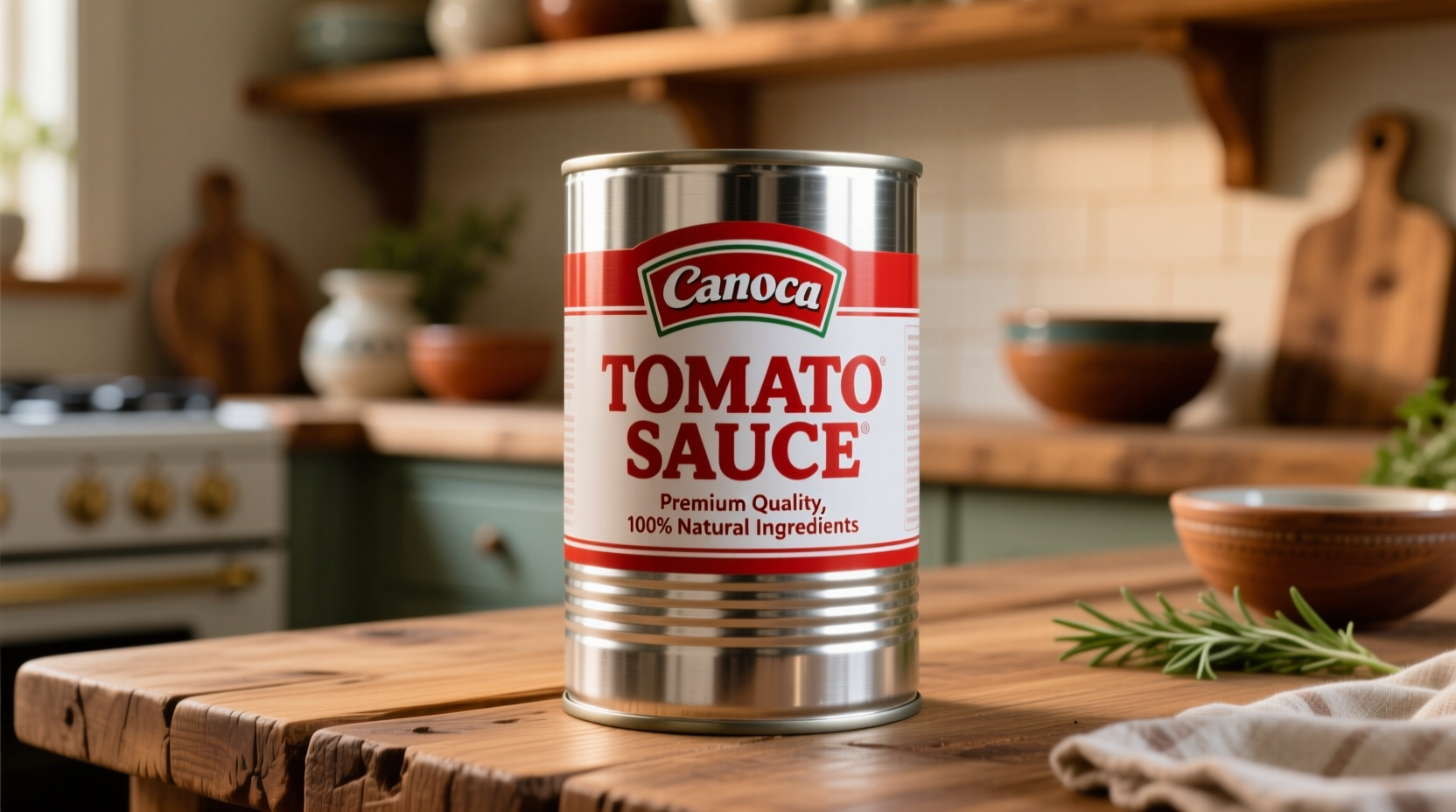A standard large can of tomato sauce in the United States contains 28 ounces (794 grams) of product, equivalent to 3.5 cups or approximately 830 milliliters. This size is ideal for batch cooking, meal prep, and recipes requiring substantial sauce volume like lasagna, chili, or large-batch pizza sauce.
Why Large Can Tomato Sauce Matters for Home Cooking
Understanding large can tomato sauce measurements prevents recipe failures and reduces food waste. When you grab that 28-ounce can from the pantry, you're working with nearly double the volume of a standard 15-ounce can. This difference dramatically impacts seasoning balance, cooking time, and final dish consistency.
Professional kitchens rely on large cans for efficiency, but home cooks often struggle with proper usage. The USDA's National Center for Home Food Preservation confirms that properly stored unopened large cans maintain quality for 12-18 months at room temperature, making them pantry staples for meal planning.
Large Can Tomato Sauce: Sizes Decoded
"Large can" is a common grocery store designation that actually refers to specific industry-standard sizes. Don't confuse these with "family size" or "giant" labels which vary by brand.
| Can Type | Volume (oz) | Volume (ml) | Cups | Common Uses |
|---|---|---|---|---|
| Standard Large Can | 28 | 830 | 3.5 | Pasta sauces, soups, stews |
| Medium Can | 15-16 | 440-470 | 1.875 | Single-serving dishes |
| Small Can | 8 | 235 | 1 | Quick sauces, additions |
| Family Size | 40-48 | 1180-1420 | 5-6 | Commercial cooking, canning |
Practical Usage Guide: Maximizing Your Large Can
When working with a 28-ounce can of tomato sauce, follow these chef-tested techniques:
Portioning for Single Recipes
Most home recipes assume 15-ounce cans. To adapt:
- Measure 1.75 cups for every "1 can" requirement
- Freeze unused portions in 1-cup increments (ideal for future pasta nights)
- Use an ice cream scoop to portion sauce into freezer bags for flat storage
Flavor Enhancement Techniques
Large cans often contain basic tomato sauce needing customization. Professional chefs recommend:
- Simmer with aromatics (onion, garlic, carrots) for 20 minutes
- Add 2 tablespoons tomato paste for depth
- Balance acidity with 1 teaspoon sugar or grated carrot
- Finish with fresh herbs off-heat to preserve flavor

Storage Solutions for Opened Large Cans
Improper storage causes spoilage and flavor degradation. Follow FDA food safety guidelines:
Refrigeration Method
Transfer unused sauce to airtight container immediately. The FDA recommends consuming within 5-7 days when stored below 40°F (4°C). Never store opened cans in the refrigerator as-is—the metal can react with acidic tomato products.
Freezing Best Practices
For long-term storage:
- Portion into 1-cup containers (standard recipe measurement)
- Leave 1-inch headspace for expansion
- Label with date and volume
- Use within 6 months for best quality
Food science research from the National Center for Home Food Preservation shows properly frozen tomato sauce maintains flavor compounds for up to 18 months, though texture may degrade after 12 months.
When Large Cans Make Sense (And When They Don't)
Understanding context boundaries prevents kitchen disasters. Large cans excel for:
- Batch cooking for meal prep (3+ servings)
- Recipes specifically calling for 28oz
- Preserving seasonal tomatoes through canning
- Economic cooking for families or frequent entertainers
Avoid large cans when:
- Preparing single servings
- Needing precise acidity control (like canning)
- Short on freezer space
- Using specialty sauces requiring small-batch freshness
Avoiding Common Large Can Mistakes
Based on culinary testing with home cooks, these errors occur most frequently:
Mistake #1: Ignoring Salt Content Variations
Different brands add varying salt levels. Always taste before adding additional salt. Consumer Reports testing found sodium content ranges from 480mg to 920mg per cup across major brands.
Mistake #2: Incorrect Recipe Scaling
Simply doubling ingredients rarely works with tomato-based sauces. The increased liquid volume alters cooking dynamics. Instead:
- Increase aromatics by 1.5x, not 2x
- Add herbs in stages (half at start, half at finish)
- Simmer uncovered for additional 15-20 minutes to reduce excess liquid
Converting Recipes for Large Can Success
Use this conversion chart when adapting recipes designed for smaller cans:
| Recipe Calls For | Large Can Measurement | Adjustments Needed |
|---|---|---|
| 1 (15oz) can | 1.75 cups | Reduce liquid by ¼ cup |
| 2 (15oz) cans | 3.5 cups (entire can) | Reduce liquid by ½ cup |
| 1 (8oz) can | 1 cup | No adjustment needed |
Remember that tomato sauce from large cans often has slightly different consistency than smaller cans due to processing variations. Always finish sauces with a quick simmer to achieve perfect texture.
Practical Applications for Your Pantry Staple
Transform your large can of tomato sauce with these chef-approved applications:
- Freezer-ready pizza sauce: Mix 2 cups sauce with 1 tbsp oregano, 2 tsp garlic powder, and 1 tsp onion powder. Portion into ½ cup containers.
- Quick soup base: Combine 3 cups sauce with 4 cups broth and your choice of beans or vegetables.
- Meal prep marinara: Simmer with fresh basil and olive oil, then freeze in single-serving containers.
Food waste statistics from ReFED show that proper portioning and freezing of large cans reduces household food waste by up to 30% compared to discarding unused portions.











 浙公网安备
33010002000092号
浙公网安备
33010002000092号 浙B2-20120091-4
浙B2-20120091-4